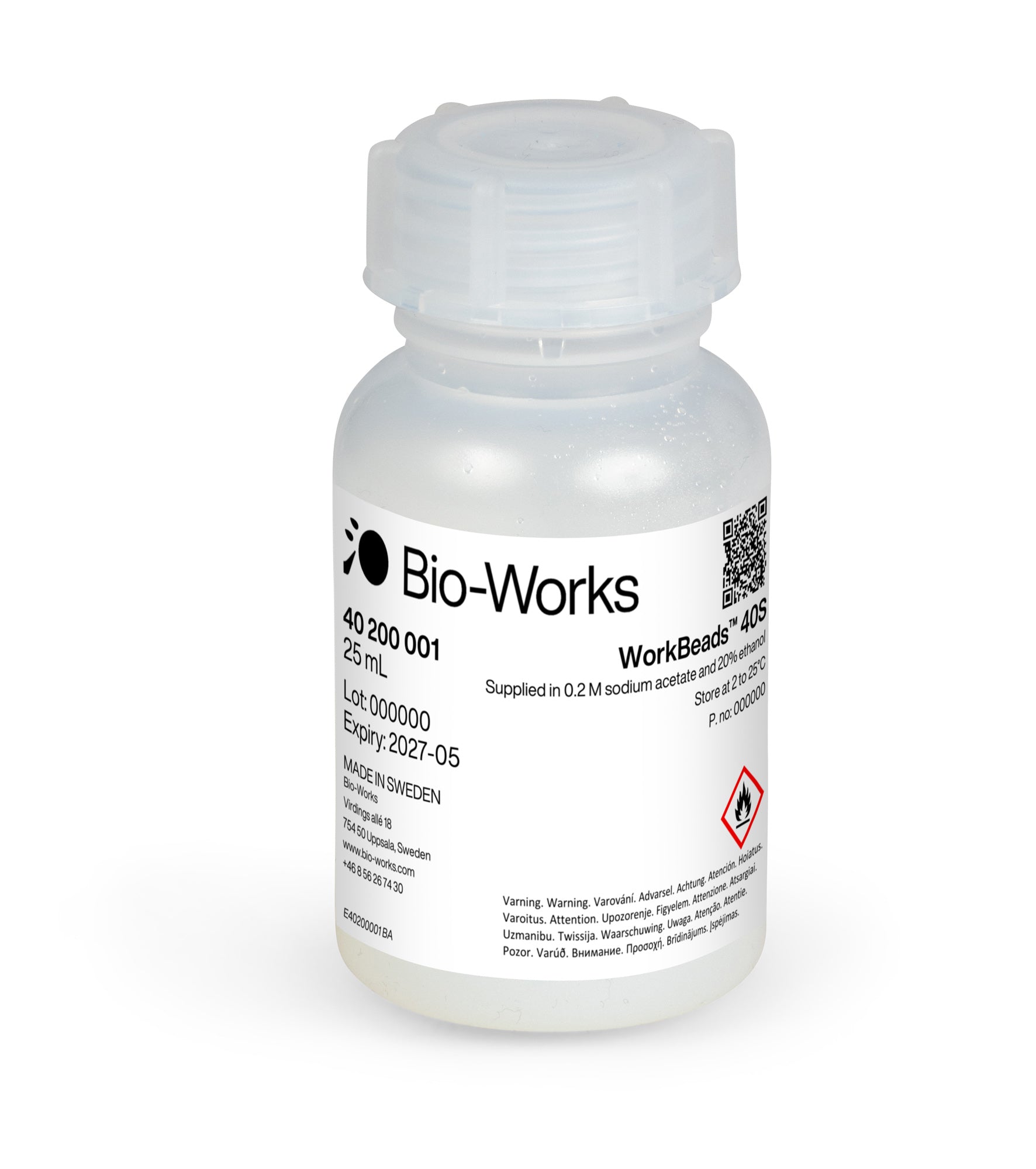
Documents
WorkBeads™ 40S resin for ion exchange chromatography is designed for research and industrial scale purification of proteins, peptides and oligonucleotides by utilizing the difference in their surface charge. WorkBeads 40S resin is a strong cation exchanger derivatized with sulfonate ligands while its contrary WorkBeads 40Q is a strong anion exchanger derivatized with quarternary amines. These resins demonstrate the property of high-resolution separation while giving low backpressure to facilitate both capture and polishing purification applications in standard bioprocess columns.
- High throughput and purity
- Reliable and reproducible results
- High chemical stability for easy cleaning-in-place
Product
WorkBeads 40S is an agarose-based chromatographic resin manufactured using a proprietary method that results in porous beads with a tight size distribution and exceptional mechanical stability. Agarose based matrices have been successfully used for decades in biotechnology purification, from research to production scale, due to their exceptional compatibility with biomolecules including proteins, peptides, nucleic acids and carbohydrates. WorkBeads resins are designed for separations requiring optimal capacity and purity. WorkBeads 40S is a strong cation exchanger derivatized with sulfonate as functional groups.
Main characteristics of WorkBeads 40S
| WorkBeads 40S | |
| Target substances | Protein and peptides |
| Matrix | Rigid, highly cross-linked agarose |
| Average particle size1 (Dv50) | 45 µm |
| Ionic group (ligand) | Sulfonate (-SO₃⁻) |
| Ionic capacity | 180 – 250 µmol H⁺/mL resin |
| Dynamic binding capacity2 (DBC) | 130 mg BSA/mL resin |
| Maximum flow rate3 (20 cm bed height and 5 bar) |
600 cm/h |
| Chemical stability | Compatible with all standard aqueous buffers used for protein purification, 1 M NaOH, 30% isopropanol and 70% ethanol. Should not be stored at low pH for prolonged time. |
| pH stability | 2 – 13 |
| Storage | 2 to 25 °C in 20% ethanol with 0.2 M sodium acetate |
¹ The median particle size of the cumulative volume distribution.
² Dynamic binding capacity determined at 4 minutes residence time in 20 mM Na-citrate, pH 4.0.
³ Optimal flow rate during binding is depending on the sample.